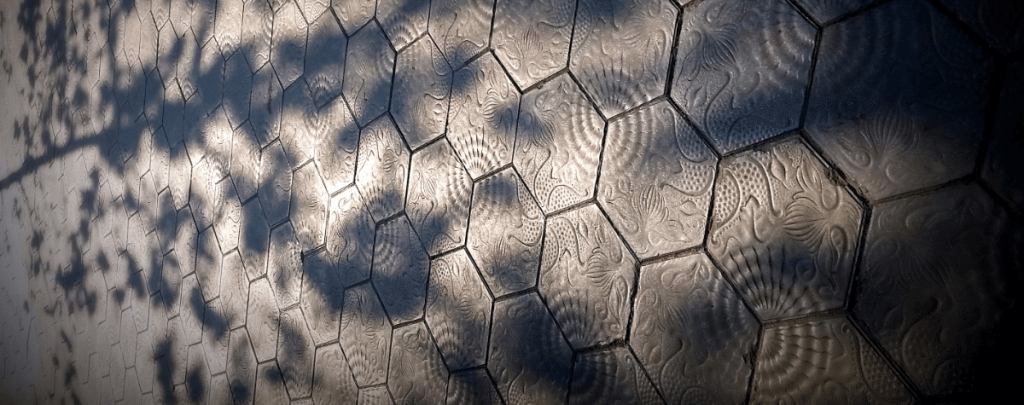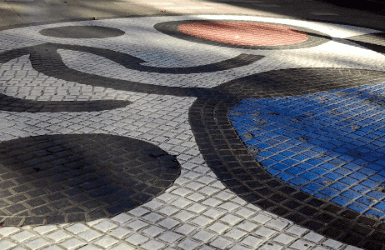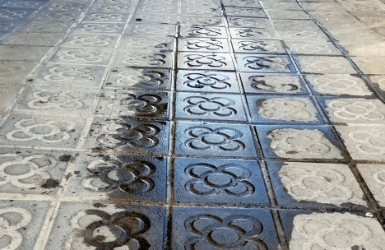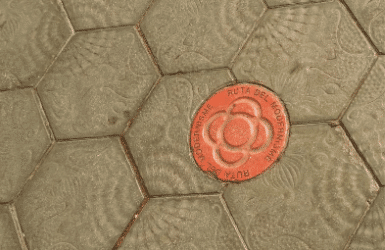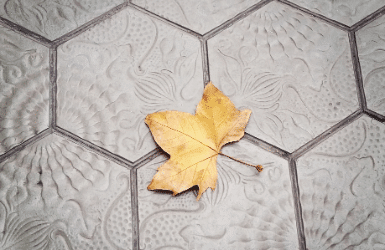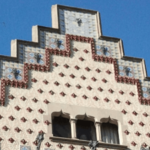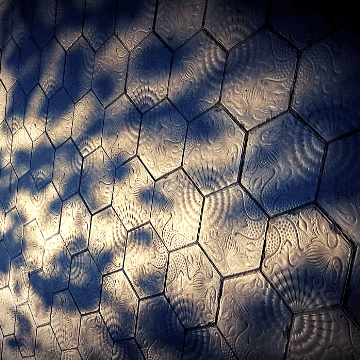
Street Tiles Of Barcelona
BEAUTIFUL BARCELONA TILES YOU'LL SEE IN THE SIDEWALKS
People in Barcelona walk around looking up to see the beautiful balconies. But looking down to the ground is a mistake: there are also beauties there they can miss! The Barcelona street tiles (also called “panots”) have inspired authors and artists. Here is how everything started:
In 1906 the Barcelona City Council approved 6 official styles of street tiles. Building owners were forced to pave the front of their properties with them. That’s when the word “panot” appears, from the French “panneau”, the new tiles are all 20x20cm (7.8×7.8 inches).
Until then, people used whatever tile they wanted. The sidewalks had become a giant mismatch. Patched tiles mixed up with unpaved areas. Actually, most streets weren’t paved. When it rained, there was mud all over the place, so locals started calling Barcelona “Can Fanga” – Mud’s House.
This was true also in the Gothic Quarter. The cobblestones in Plaça Sant Felip Neri are more recent than you’ll think. And the flagstones in the surrounding streets might also look medieval but they only date from the 1950’s…
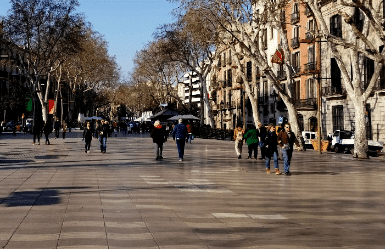
In the Eixample and in other districts you can still find rare unique models that remain pre-1906. But they are hard to find and they are bound to disappear as they break and are replaced by "official ones". And even the number of official ones is nowadays getting reduced to favor the most efficient designs. However, some models have become iconic, and they'll stay to stand out the identity of particular landmarks.
These are the best panots and street tiles in Barcelona:
1
La Rambla pavement
I often tour people around that for a second think the ground of La Rambla wasn’t even. It gets them dizzy. That’s because of the optical effect of the undulating pattern of the pavement. Installed in the 1970’s, it’s inspired in the one in Rossio (Lisbon), copied later in places such as Porto, Manaos, Rio de Janeiro, Alicante…
There was a plan to substitute it by smaller and more resistant straight tiles, but the project got stopped by Covid. BTW, marking the center of La Rambla, in Pla de l’Os, you’ll find another interesting pavement: a colorful mosaic by Joan Miró.
2
The Barcelona Rose
3
The chocolate bar
The best example of simplicity, two lines cross in the middle of a square tile, dividing it into 4 smaller squares. It’s the model called to be used in the majority of locations for many reasons. There’s no upside-down or wrong way to install it, making the mise en place fast and quick. And it can be easily halved, what makes it very adaptable. It also drains the rainwater in an efficient manner.
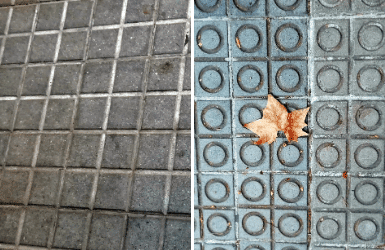
It’s just… boring. You might also occasionally find a similar pattern with 9 squares instead of 4. Or 4 squares with 4 or 2 circles in them.
4
The fallen leaves
In 2014 a renovation of the Diagonal Avenue included the latest panot design. It is inspired in fallen leaves of platan trees (the European cousin of sycamores).
They are anti-slip and thermally efficient. They incorporate self-cleaning characteristics. Yet locals complained: the pattern wasn’t shallow enough and people tripped… Or maybe it is locals are never happy enough.
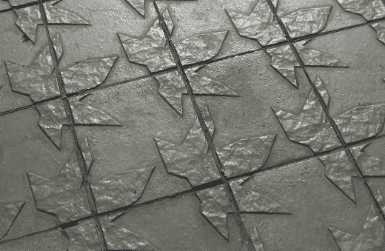
5
Informational tiles
Researching for this post I had many “aha” moments. One of my favorite was that tiles could not just be decorative or functional, but they could also be informative. That was the purpose of passing a law in 1916 making the owners of corner buildings to mark the name of the streets with tiles.
It’s not done anymore, but you can still find letter tiles in some corners, although often the complete word is not visible anymore. As the tiles broke, they were substituted by non-lettered ones.
More recently, tiles have been used to educate locals. Next to some unique trees you’ll see green round tiles stating the name of the tree. Or they can have been used to mark tourist routes. Pink round ones for the Modernism Route. With a scallop shell for the Camino de Santiago hiking trail.
AND BONUS! The famous Gaudi tiles!
6
Panots Gaudi
In 1904 Antoni Gaudi designed a hydraulic pavement that would be used in Casa Batllo. However, in the end it was used in his next project: Casa Mila. It was unique hexagonal design that required 7 pieces put together to reveal the full pattern: a seashell, a starfish and a sea weed.
In the 1970’s the tile makers Escofet replicated it in a large size to pave Passeig de Gracia, where both Casa Batllo and Casa Mila are located. Unfortunately, those tiles were too large and broke easily. In 1997 they were finally replaced by the original size. The book Origin by Dan Brown makes them an important part of its plot. Brown defines its design as “primordial soup“.
What are your favorite Barcelona tiles?
Marta
MORE BARCELONA TIPS FOR YOU:
SHARE WITH YOUR TRAVEL MATES
RESEARCHING FOR A TRIP IS TIME-CONSUMING…
Need more inspiration?
Our 100% FREE Barcelona Collection will give you everything you need to organize the trip of your lifetime to Barcelona.
BEST INSIDER TIPS FROM THE PROS!

Last update on 2024-04-25 / Affiliate links / Images from Amazon Product Advertising API

